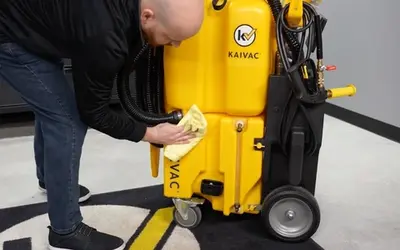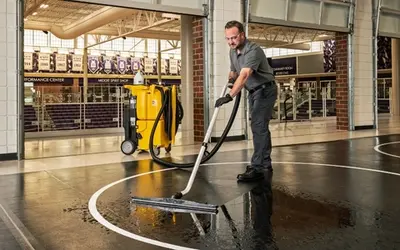Public Restroom Cleaning Checklist—Know Where to Start

Following consistent restroom cleaning procedures takes all of the guesswork out of this important task. It makes cleaning staff more efficient, sets clear expectations, saves time and prevents possible cross contamination. A cleaning checklist not only makes the job clear, it also highlights seemingly benign areas that are actual pathogen hotspots. Clean toilets and urinals for instance, are an obvious priority but restroom sinks can harbor just as much salmonella, listeria and E. coli.
Get Your List
Commercial restroom cleaning checklists can be downloaded from a variety of sources. But the best checklist goes beyond a simple template and addresses a broader cleaning strategy. It includes:
- Develop a plan: This is the basic outline of cleaning tasks and frequencies.
- Train your workers: Teach your custodians what areas to clean, when to clean them, how to clean them and what tools to use. Just as crucial, tell them what tools not to use.
- Know when to spot clean and when to deep clean: Spot cleaning is performed during business or school hours. Deep cleaning takes place after hours. Emergency messes should be cleaned immediately, no matter what time it is.
- Clean top to bottom: Work from high to low, starting with partition tops, walls and mirrors before moving to fixtures, countertops and floors.
- Select better tools: Traditional cleaning tools like cotton mops and rags actually make effective cleaning harder. Upgrading to an automated cleaning systems can reduce restroom fixture cleaning times and save money on cleaning chemicals.
- Test and evaluate your clean: ATP rapid monitoring systems can quickly test for the presence of living pathogens in a freshly-cleaned restroom. This data can be used to evaluate cleaning practices and procedures.
Commercial Restroom Cleaning Procedures: How to Do It Right
With the right mindset, tools and restroom cleaning checklists in hand, it’s time to start cleaning.
Start with a top to bottom dusting. Then it’s time to inject cleaning chemicals on fixtures and all soiled surfaces. Start with the fixture closest to the door and travel in a circular pattern.
The cleaning solution should be sprayed on toilets for seven seconds, urinals for three seconds and sinks for two. Flush chemicals from the spray line onto the floor, manually brush heavily-soiled areas if needed.
Pressure wash fixtures from top to bottom with clear water. Urinals should take about 15 seconds.
Pinpoint rinse toilet plumbing and seat top then lift seat and rinse hinges and seat bottom. Place the nozzle under the rim and rotate around the rim for four seconds then spray directly into the bowl for another four. Finally spray the bottom and base of the toilet. The high-pressure rinse should take about 30 seconds per toilet.
Squeegee mirrors. While glass cleaner can clean and shine mirrors they are less effective and require quite a bit of elbow grease. A well-made squeegee will keep mirrors bright and shiny and can be used on flat surfaces, like countertops and partition walls, as well.
Wet vacuum restroom floors from front to rear to fully remove dangerous soils and odor-causing bacteria. A wet vacuum also leaves floors dry and ready to use. You can also blow dry flush handles and toilet seat tops for immediate use.
Restock paper products, soap and other supplies.
Public restrooms play an important role in community health and individual well-being, according to Wikipedia. Keeping yours clean and inviting will enhance your business, office or school.
Related Posts

Preventive Maintenance for Your No-Touch Cleaning® System
Your Kaivac No-Touch Cleaning system makes restroom maintenance fast and easy. Keeping your No-Touch Cleaning system in good working order is also fast and easy. Kaivac makes performing preventative maintenance and troubleshooting potential issues simple. No special equipment or technical expertise required.
Read more
A Cleaning Lesson from Schools and Universities that Rely on Kaivac Systems
School, college, and university facilities departments from around the country love their Kaivac Cleaning Systems. Why wouldn’t they? Designed with the custodial worker in mind, these tools and processes from Kaivac are easy to master, work super-fast, and deliver exceptionally clean, fresh-smelling spaces.
Read more
Reduce Absenteeism Through Better School Cleaning
K-12 school leaders are coming up with a variety of ways to combat chronic absenteeism. Strategies like offering in-school laundry services and basic health care show a lot of promise. But providing better cleaning may be one of the most effective, most cost-efficient tactics available.
Read more